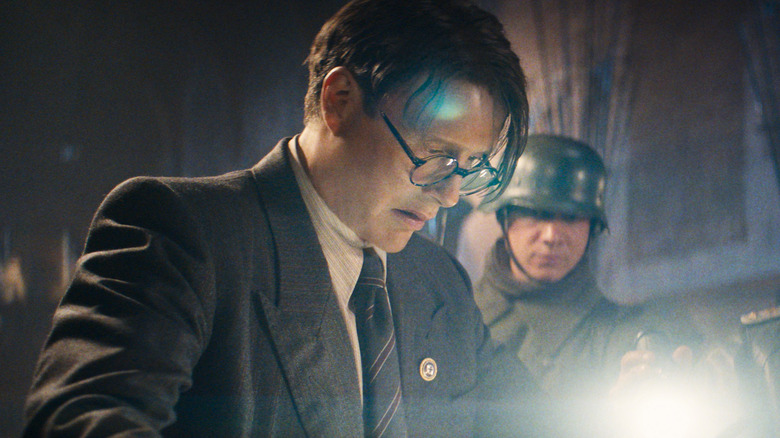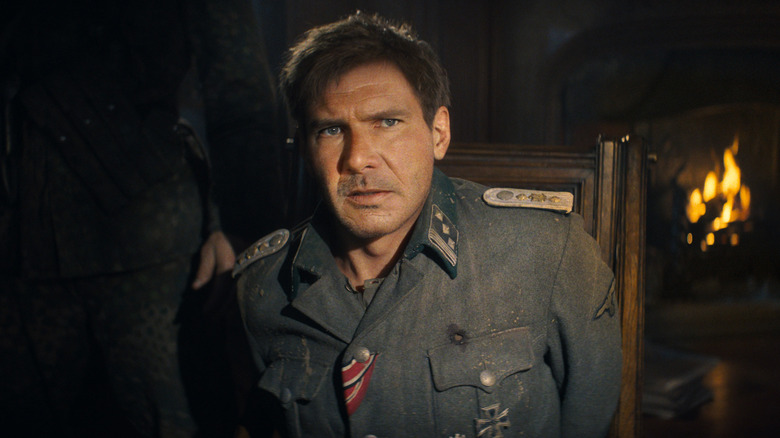Indiana Jones: How Does Dial Of Destiny's Biggest Plot Device Actually Work?
Warning: This article contains spoilers for "Indiana Jones and the Dial of Destiny."
If 2023 has taught us anything, it's that we may need to shelve time travel stories for the foreseeable future.
Just weeks after "The Flash" used a bowl of soupy spaghetti in an attempt to directly out-complicate the already logistically tenuous temporal mechanics of Marvel's "Avengers: Endgame," James Mangold's "Indiana Jones and the Dial of Destiny" has unexpectedly emerged as a dark horse in the race to exhaust audiences with jaunts into history. The fifth and final installment in the franchise established by George Lucas and Steven Spielberg back in 1981 features a MacGuffin that ultimately allows Dr. Jones (Harrison Ford), his plucky new companion (Phoebe Waller-Bridge) and his latest Nazi foe (Mad Mikkelsen) to travel back to the Hellenistic age where they literally hold a conversation with the Ancient Greek mathematician Archimedes. Which, considering the aliens and ghost knights, is pretty tame for America's most qualified and least regulated archaeologist.
While "Dial" avoids the subversive (and convoluted) time travel mechanics popularized in recent blockbusters in favor of a simple, linear time stream, it throws one wrench into the formula by making time travel a byproduct of naturally occurring phenomena. The Dial — or Antikythera — doesn't so much enable time travel itself as it does provide the user with the means of locating the times, dates, and places at which portals to the past will appear. If it sounds a bit too unpredictable to be practical, it is — a small miscalculation launches the ensemble past World War II into an ancient Roman skirmish. Indiana Jones is no slouch when it comes to venturing back in time, however, as the pulp hero has done so several times throughout the franchise's extended canon.
Indiana Jones has time traveled at least twice in the past
The first chronological appearance of time travel in the "Indiana Jones" franchise was in the 1991 novel "Young Indiana Jones and the Ghostly Riders," which canonically takes place decades earlier, in 1913. While visiting his father, Henry Jones Sr. (famously portrayed by the late Sean Connery in "Indiana Jones and the Last Crusade") in Wales, the young adventurer is involuntarily thrust into the rubble of the newly conquered kingdom of Camelot. He returns to the present swiftly.
Eight years later, in the novel "Indiana Jones and the Secret of the Sphinx" (which also featured his first interaction with an alternate version of the historically dubious Crystal Skulls), it is shown that Jones experienced a similarly brief brush with the past while fleeing a large anaconda. He travels back several centuries from 1930s British Honduras (presently Belize) to the lost city of Cozan.
While it's certainly up for debate if these instances are canon, seeing as they take place outside the events of the film in novels that likely contradict other expanded materials with arguably equal claim to canonical legitimacy, "Dial of Destiny" doesn't necessarily invalidate them. Especially since Harrison Ford is intent on retiring the character for good after this last outing, it will likely always be open to interpretation whether or not Jones has been time-traveling since he was a child.

